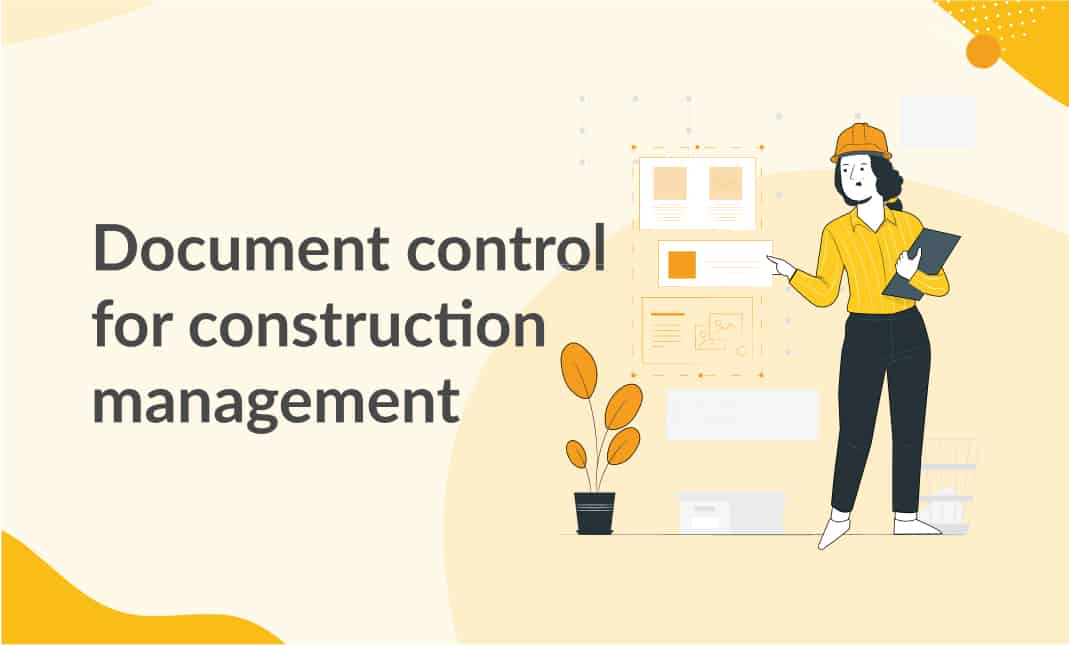Streamline Cooperation: The Power of Construction Document Management Solution
Streamline Cooperation: The Power of Construction Document Management Solution
Blog Article
Optimizing Project Collaboration: Engineer's Best Practices in Building And Construction Document Management
In the elaborate realm of architectural jobs, the reliable management of construction documents stands as a foundation for success. Designers, with their precise interest to detail and cutting-edge layout remedies, are entrusted with coordinating a harmony of resources, stakeholders, and timelines. Among this intricacy lies a crucial inquiry: exactly how can engineers improve collaboration procedures to enhance task results? By checking out vital methods such as leveraging cloud-based systems, establishing durable communication methods, and making sure information security, architects can boost their file monitoring practices to new elevations.
Leveraging Cloud-Based Platforms
By transitioning from standard paper-based systems to cloud solutions, architects can improve collaboration, enhance file availability, and improve general job effectiveness. This ease of access advertises smooth interaction and control amongst project stakeholders, leading to fewer errors and hold-ups in the building and construction process.
Furthermore, cloud-based platforms offer a protected environment for keeping delicate project details, providing security, regular back-ups, and customer authorization settings to secure information integrity. Designers can also take advantage of the scalability of cloud remedies, allowing them to change storage space capacity and capability based on job needs. In general, leveraging cloud-based systems empowers designers to enhance their construction paper monitoring processes, driving higher cooperation, efficiency, and success in their jobs.
Applying Version Control Solution
Having actually established the benefits of cloud-based systems in building and construction document administration, engineers can now improve their record control procedures by implementing Variation Control Equipment. Variation Control Systems (VCS) are important tools that track adjustments in files, making certain that staff member are always functioning with the most recent and most exact details. By implementing VCS, architects can maintain a centralized repository where all project files are stored, enabling seamless partnership while reducing the danger of errors and version conflicts.
One key advantage of Variation Control Equipment is the capacity to track the full background of record changes, allowing users to go back to previous versions if required (construction document management). This attribute is particularly important in building tasks where layout models and adjustments are typical. Additionally, VCS assists in much better communication among team participants by providing a clear audit route of that made particular modifications and when they were made. This openness not only improves accountability yet likewise assists in solving conflicts or discrepancies that may emerge throughout the job lifecycle.
Developing Communication Protocols
To ensure efficient and efficient task sychronisation, architects should develop clear and robust interaction protocols within their building and construction file administration processes. This system could be a task management software, email strings, or cloud-based storage space services.
Additionally, communication methods ought to additionally include standards on just how to deal with problems, modification orders, and immediate concerns that might emerge during the task lifecycle. Establishing an organized technique to communication guarantees that all stakeholders get on the very same page, advertises openness, and eventually adds to the effective completion of the building task.
Using BIM Software Application for Coordination
BIM software program plays a critical function in enhancing control amongst job group participants in the building and construction market. Structure Info Modeling (BIM) helps with collaboration by supplying a central system where designers, designers, contractors, and various other stakeholders can collaborate in a collaborated fashion. With BIM software, task participants can access and upgrade a common design which contains in-depth details regarding the structure design, building components, and job timetables.

Moreover, BIM software application enables real-time cooperation and communication amongst employee, no matter of their physical place. Via cloud-based BIM systems, project stakeholders can access the most up to date job information, track adjustments, and make notified decisions without delay. In general, leveraging BIM software for control enhances task effectiveness, productivity, and inevitably causes effective job outcomes.
Ensuring Information Safety And Security and Conformity
In the world of construction paper administration, protecting information stability and guaranteeing regulatory conformity are vital considerations for architects and various other job stakeholders. Architects need to execute robust see here now safety steps to protect sensitive task info from unapproved gain access to or violations. Making use of safe cloud storage remedies with file encryption methods and access controls can aid alleviate risks connected with information theft or loss. Regularly updating software program and systems, carrying out protection audits, and providing personnel training on information safety and security best techniques are important action in maintaining a safe setting for building record management.

Conclusion
Finally, architects can enhance project partnership in construction paper management by leveraging cloud-based platforms, applying version control systems, developing interaction protocols, using BIM software program for coordination, and making sure data safety and compliance. These finest techniques help enhance Get the facts the construction process, boost communication more tips here among task stakeholders, and enhance performance in project distribution. By complying with these standards, architects can successfully manage building and construction documents and assist in effective job end results.
Through BIM software, job individuals can access and update a common design that consists of comprehensive details regarding the structure layout, building elements, and project schedules.
Via cloud-based BIM platforms, project stakeholders can access the most current project details, track modifications, and make educated decisions immediately - construction document management. Overall, leveraging BIM software application for control improves task effectiveness, productivity, and eventually leads to effective task end results
In conclusion, architects can maximize task cooperation in building and construction document monitoring by leveraging cloud-based systems, implementing version control systems, developing interaction methods, making use of BIM software program for control, and ensuring data protection and conformity. These best practices aid streamline the building procedure, boost interaction among job stakeholders, and improve effectiveness in task delivery.
Report this page